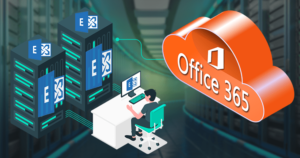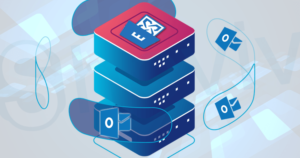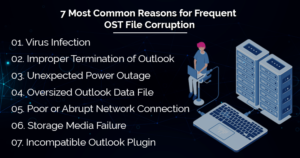Frequently, if you love to take on challenges, it will be the best challengeable task for you. For the migration from Exchange to Exchange, an Exchange Server migration checklist is a must.
Surely the migration from one Exchange server to another Exchange will take your crucial time. Specifically, you have to move an older Exchange version to the newly launched version, like Exchange 2010 to 2013 migration. It can get even more terrific and challenging task when the source-destination servers are in diverse forests. Therefore, you have to invest your quality time to prepare Exchange Server Migration Checklist to complete the Microsoft Exchange Migration task effortlessly with some valuable and lucrative methods.
This articulation will be helpful for the reader while they consider all the vital points of migration scripts given for Exchange 2010 to 2013 migration.
Microsoft Exchange 2010 to 2013 migration has three phases:
- Planning- Creating a plan is a vital part of the Exchange 2010 to 2013 migration. This aspect involves crucial info required for successful deployment. This phase comprehends all Setup & deployment, Public Folders, Mailboxes, Exchange Management-Shell, Mail Flows, and the Client-connectivity.
- Deployment– This aspect establishing a co-existence amid the source and the destination Microsoft Exchange Server.
- Migration- The last phase for migration includes mail flow migration, public folders migration, clients & mailboxes migration, etc.
Checklist for Exchange Migration 2010 to 2013
Whenever you planned for Exchange Server Migration from Exchange 2010 to Exchange 2013, here are some of the best suggestions to assists the admin be masters on the migration woes.
Project evolution- while barring crisp inspection, you don’t have options to gather the right resources. Nor to evaluate the nominal time duration of the project submission date. This time and the situation you require to execute the project evolution to get every lucrative aspect literally of the project. The below-given factor will help you in project evolution.
- Firstly you should know the business needs such as recovery, migration needs and many more.
- Amount of data you want to keep.
- Keep in mind the data quantum for the execution of migration.
- Specify the types of data to migrate, such as emails, address books, appointments, tasks, etc.
- At last, describe the end line for the accomplishment of execution means you can get it in a week, two weeks, or months.
These are some points and strategies that will help you in accumulating information for making a perfect plan. Also, it helps out to make a figure for the Exchange 2010 to 2013 migration execution.
Reaffirm the system needs: when you’ll have made a plan and are well acquainted with the project with all sides, the finishing date, and all included finishing dates, then you should authenticate the PC needs. One should also be aware of all the necessary details related to the system. Like hardware needs and the software requirements, the speed of network provided, operating systems need for the execution of the project. Don’t skip to ensure about the coo existence scripts.
Make neat ‘n’ clean the Active Directory
One of the most important checklists is to clean up and make your Active Directory spotless. Remove all unauthenticated references from Exchange domains and other AD objects. Otherwise, these substances can become the cause of migration failure. You should eliminate these elements from the AD with ADEdit, but ensure and re-check that you have already gotten the backup.
Archiving Data or Compiling Data: Before starting the Exchange migration, data compiling is very important. Archiving Data merely not only defer the redundant migration of data to the newer exchange server migration checklist. It also assists in alleviating the server pullulate. For example, you have 4 TB of data on your messaging system without compiling. It would expand and increase itself up to 5 to 7 TB. It is because of the SIS factor (single instant storage), causing data reproduction in the newer version. You can remove it by archiving the data, and it will only inject the elements into the target Exchange server. Hence, eliminating the chances of corruption and data loss in data files.
Assure about Good Health of Exchange Database
Assuring about the health of exchange Databases helps you a lot. It certainly makes you aware of the future calamity and woes that would come during the execution of migration from Exchange 2010 to 2013. That’s why it is necessary to ensure the good health of the Exchange Databases. Utilize ESEUTIL utility whenever you need routine backups to defer any disintegration. Everyone aware of how critical task is the migration execution of the mailboxes and public folders. So nobody wants to mess with new woes within existing Exchange Databases.
Plan for Server Roles: Exchange 2010 utilizes five given below server roles.
- Client Access server (CAS)
- Mailbox server
- Hub Transport server
- Edge Transport server
- Unified messaging server
However, in the checklist of Exchange 2010 to 2013 migration, solely need two server roles – the Mailbox Server and Client Access Server (CAS). And it becomes vital & mandatory to assess the current architecture and identify how this modification affects the overall migration performance. Hence, it will also guide you to start evolving your migration journey.
Identify the Impact on Hardware Resources: Exchange 2013 preview release seems to have more exertion on hardware resources than the deployment execution of Exchange 2010. That’s why it also becomes mandatory to assess how Exchange 2013 will give an outcome on your recent hardware resources.
Be aware of keeping Public Folders:
Public folder migration is such a complicated task. With Exchange 2013 – you have to work with modern public folders. Till the last working days, it was feasible to migrate Public folder content to SharePoint.
With the execution of modern public folders, you’ve to be more careful until the completion of the modern Public folder execution. But, you still have the option to save those folders in legacy Public folders.
Develop Smooth Migration Roadmap: New versions of the Exchange has a different process to execute the migration from Exchange 2010 to 2013. So, estimate all the recent exchange server migration checklist for Exchange 2013/2016/2019. And perceive how it is going to put an impression on your organization. Often-time, run it down to certainly develop the smooth roadmap and successful execution of Exchange Migration.
The Final deduction to Exchange 2016/2019:
Execute a final validation where compiles all the data from your existing messaging system and injects it into the new version. When you’ve got the confidence and all the Exchange elements are doing fabulous. Then you may perform as your decision to go live on your Exchange 2016/2019 platform.
However, do not forget to equip the post-migration tasks. Once your migration execution gets accomplished to Exchange 2013/2016/2019, it is all done to accredit that everything is performing very smoothly, such as your mail flow, mailboxes, etcetera after the successful Exchange 2010 to Exchange 2013 migration.
Microsoft exchange server migration checklist 2013/2016 is a keen task to execute with the basic executions. Well, any admin can follow the factors mentioned above to get an impressive and safe migration.
Despite utilizing this all, you have an option to select an alternative path to evacuation from the complication manual migration task by using a sophisticated, swift, and secured third-party Exchange migration tool such as the Shoviv Exchange Server Suite to execute the Exchange Server migration checklist. That allows glib Exchange to Exchange/Office 365 migration or any version in the same domain and cross-domain atmosphere. The tool consists of the perfect features as all the pre-migration checklists to ensure successful Exchange 2010 to 2013 migration execution.
Replace Exchange Migration checklist with Shoviv Exchange Server Suite
One can use the Shoviv Exchange Server Suite to export mailboxes from one Exchange Server to another Exchange Server without any restriction on the versions and size of mailboxes. It also allows recovery of the EDB files in a hassle-free manner. Using Exchange Server Suite provides multiple features and target flexibility to users. Besides the Exchange 2010 to 2013 migration, users can export their Exchange mailboxes into Office 365, PST files, Outlook profiles, and many other popular file formats.
Exchange 2010 to 2013 migration in easy steps:
- Firstly, install and open the software.
- Secondly, click on the Exchange Server mailboxes option.
- Then, provide ask credentials and click Next.
- In the next wizard, select mailboxes to export.
- Now click on the Live Exchange option from the ribbon bar.
- Check/uncheck subfolders and click on the Next button.
- In the next wizard, select Outlook profile or provide Active directory’s credentials and click Next.
- Now map source and target mailboxes and click Next.
- The next wizard will be the filter wizard. Use filters as per need and click on the Next button. (Click Advance option to use advanced features).
- That’s it now the software will start Exchange 2010 to 2013 migration (can be any version).
The best thing about the software is it allows uploading a CSV file for email translation, folder mapping, and Map source and target mailboxes. Hence you can easily get desired migration from Exchange 2010 to 2013 or any other version.
Why choose Exchange Server Suite for Exchange migration 2010 to 2013 or any other version?
You can export mailboxes between Exchange Server using the manual method. But manually, there are high chances of data loss and mailbox corruption. Shoviv Exchange Server suite provides many advanced features which are not available in the manual method. Some of its useful features are as given:
- No restriction on number and size of mailboxes.
- Provides email translation and folder mapping feature.
- Allows users to resume the export process using the Incremental export option.
- Provides filter option based on the message class and item date.
- Displays a preview of the mailboxes’ data before exporting.
- It can export mailboxes in the Public folder and archive mailboxes of the Exchange Server.
- Allows users to map sources and folders by uploading a CSV file and saves users crucial time.
- Provides a live log report to monitor the process of the migration.
- The software can export mailboxes even if the target and source mailboxes are located in diverse forests.
- Last but not least, it eliminates the risk of data loss and mailbox corruption.
Note: you can also try Exchange Recovery Manager tool to Migrate Exchange and Office 365 Mailboxes: https://www.shoviv.com/exchange-recovery-manager.html
- How to Backup and Restore Emails in Webmail? - March 25, 2025
- How to Migrate Outlook to New Computer? - February 15, 2025
- Fix If Outlook Cannot Display the Specific Folder Location - February 1, 2025





